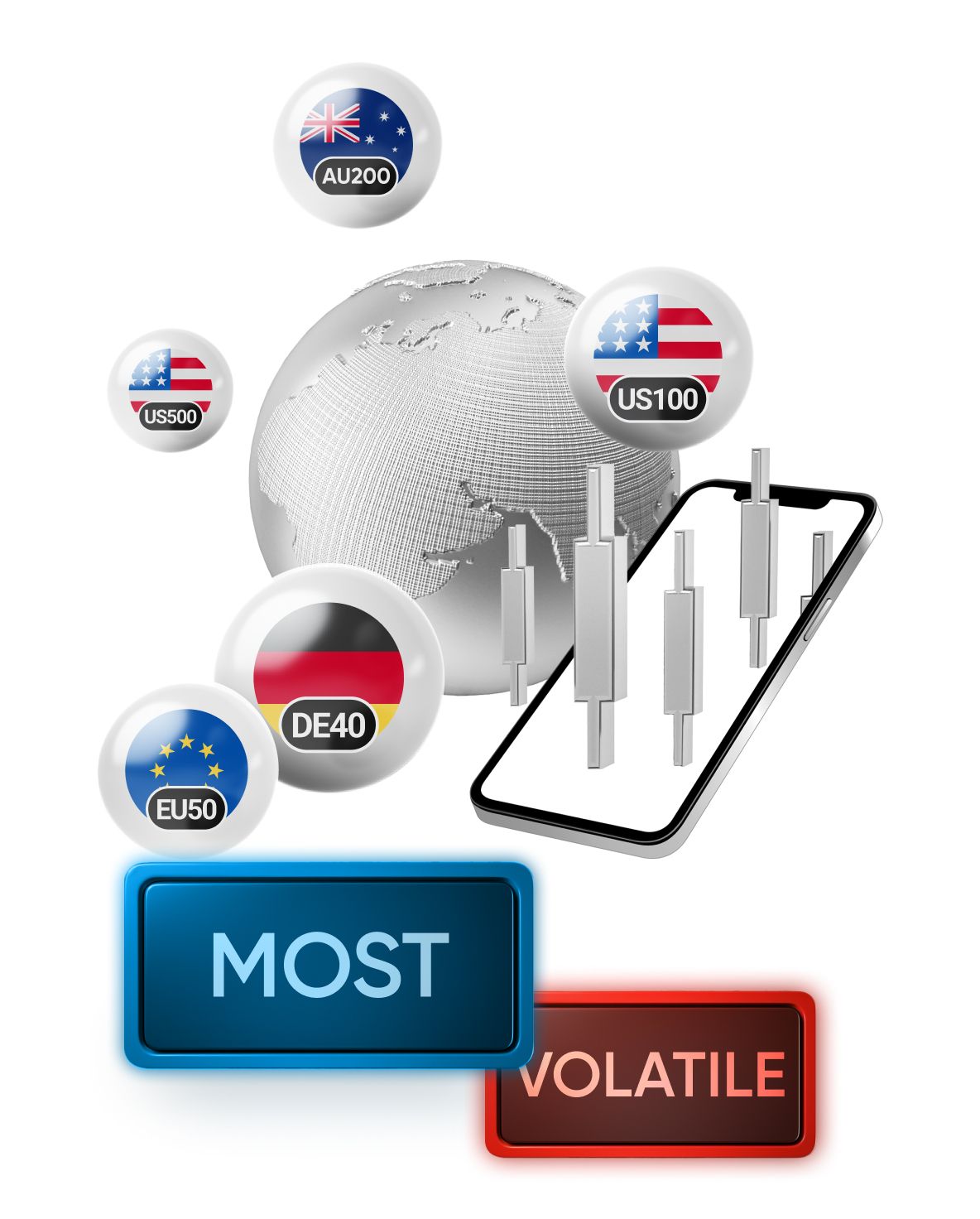Discover which indices are more volatile potentially, based on historical prices. Learn more about the tools that can help you understand index volatility in the FAQ.

Put simply, volatility is the measure of the magnitude of price movement for a given asset over time. While volatile indices, as well as volatile assets in general, can present opportunities for traders, they can also present significant risks to capital. The most volatile indices can change depending on market conditions, and you can use certain tools such as the VIX to understand the degree to which markets are moving, as well as apply technical and fundamental indicators to predict where they might move next.
Index volatility is measured through tools such as the VIX, which is directly related to the US 500 index and expectations of its volatility. Historical volatility involves determining the standard deviation of daily price changes, while implied volatility is another potentially useful concept involving options pricing models. Also, the average true range, or ATR, calculates the range between an index’s high and low prices over a given period. Bollinger Bands® can also be used where the size of the ‘band’, derived from a moving average, can give information about volatility based on the width of the bands.
Market volatility in indices, as well as other asset classes, is beholden to many influences. Earnings news is one factor that may impact the largest stocks in an index like the US Tech 100. For example, Apple or Microsoft earnings that missed or exceeded expectations can have an outsized impact on the overall index price due to the considerable influence of these highly weighted stocks. Also, wider macroeconomic factors such as the job market, industrial and commercial activity, and interest-rate decisions can affect consumer confidence and in turn impact share prices and indices. On a technical level, key support and resistance levels can dictate volatility too.
Margin trading, or leveraged trading, is when traders have exposure to larger positions than the size of their initial deposit. This means they can profit more than the amount they put down, but also may lose more in unfavourable market conditions. When margin trading, you only have to put down a small percentage of the total value of the position, (known as the margin itself). If your position goes against you, you may receive a margin call, meaning the equity in your account has fallen below the minimum required. That means you’ll need to deposit more or reduce your sizing to continue with the trade.